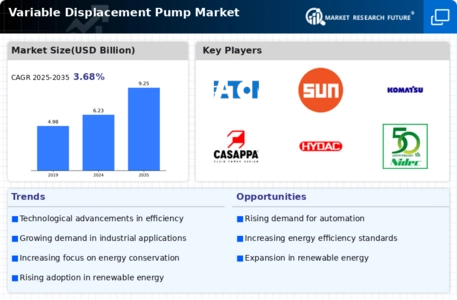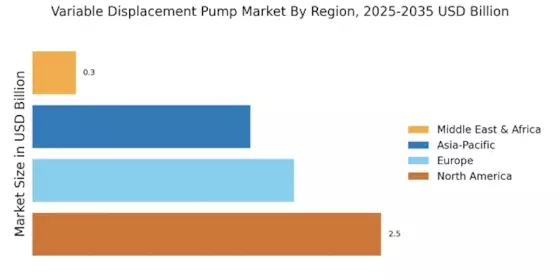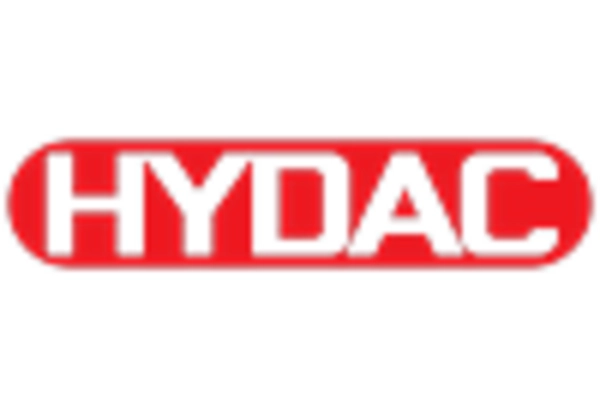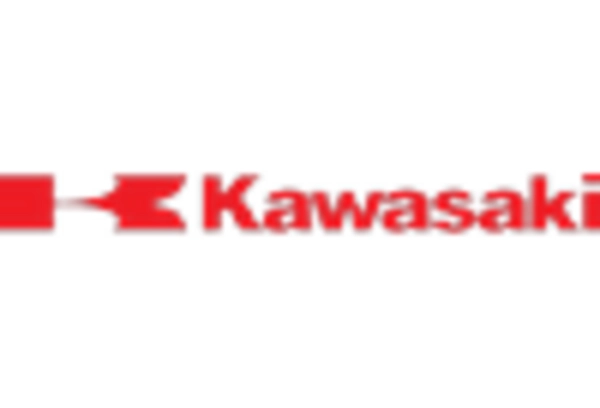Regulatory Compliance and Standards
The Variable Displacement Pump Market is significantly influenced by regulatory compliance and industry standards aimed at improving efficiency and safety. Governments and regulatory bodies are increasingly implementing stringent guidelines regarding energy consumption and emissions, compelling industries to adopt more efficient pumping solutions. Variable displacement pumps, with their inherent ability to optimize energy use, are well-positioned to meet these regulations. Compliance with standards such as ISO 9001 and ISO 14001 not only enhances operational credibility but also opens up new market opportunities. As industries strive to adhere to these regulations, the demand for variable displacement pumps is likely to increase, driving market growth.
Diverse Applications Across Industries
The versatility of variable displacement pumps is a key driver in the Variable Displacement Pump Market. These pumps find applications in various sectors, including automotive, aerospace, and manufacturing, due to their ability to handle different fluids and pressures. For example, in the automotive industry, variable displacement pumps are utilized in hydraulic systems for power steering and braking, enhancing vehicle performance and safety. The manufacturing sector also benefits from these pumps in hydraulic machinery, where precise fluid control is essential. As industries continue to evolve and diversify, the demand for adaptable pumping solutions is expected to grow, further propelling the variable displacement pump market.
Sustainability Initiatives Driving Demand
The Variable Displacement Pump Market is witnessing a growing emphasis on sustainability, which is driving demand for more efficient pumping solutions. As industries face increasing pressure to reduce their environmental impact, the adoption of variable displacement pumps, known for their energy efficiency, is becoming more prevalent. These pumps can adjust their output based on system requirements, leading to lower energy consumption and reduced greenhouse gas emissions. According to recent data, the market for energy-efficient pumps is projected to grow at a compound annual growth rate of over 5% in the coming years. This shift towards sustainable practices not only benefits the environment but also offers cost savings for businesses, making variable displacement pumps an attractive option.
Economic Growth and Infrastructure Development
The Variable Displacement Pump Market is poised for growth due to economic expansion and infrastructure development initiatives. As economies recover and develop, there is a heightened demand for efficient pumping solutions in construction, water management, and energy sectors. Investments in infrastructure projects, such as roads, bridges, and water treatment facilities, are expected to drive the need for reliable and efficient variable displacement pumps. Market analysis indicates that the construction sector alone is projected to grow at a rate of 4% annually, which will likely boost the demand for these pumps. This economic momentum not only supports the market but also encourages innovation and competition within the variable displacement pump industry.
Technological Advancements in Variable Displacement Pumps
The Variable Displacement Pump Market is experiencing a surge in technological advancements that enhance efficiency and performance. Innovations such as electronic control systems and advanced materials are being integrated into pump designs, leading to improved energy efficiency and reduced operational costs. For instance, the introduction of smart pumps equipped with IoT capabilities allows for real-time monitoring and predictive maintenance, which can significantly extend the lifespan of the equipment. As industries increasingly prioritize automation and precision, the demand for technologically advanced variable displacement pumps is likely to rise. This trend not only supports operational efficiency but also aligns with broader industry goals of reducing carbon footprints and optimizing resource utilization.


















Leave a Comment